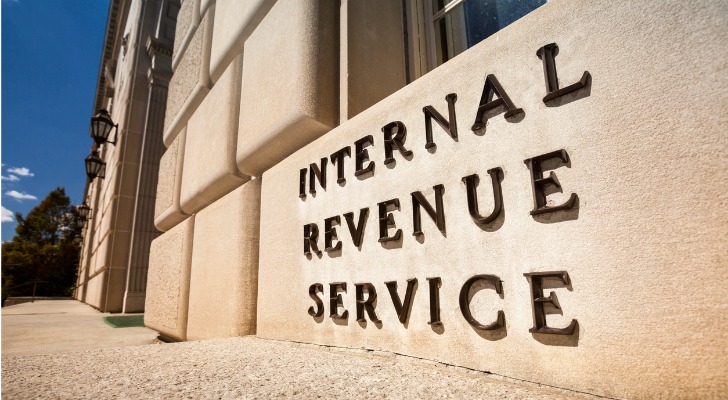When it comes to managing your retirement savings, an indirect rollover is one of the tools available to you. This financial transaction involves you – the account holder – personally receiving and moving funds from one retirement account to another within a specific timeframe. However, it’s crucial to understand the tax implications of this maneuver and avoid the costly penalties you could face when incorrectly executing an indirect rollover.
A financial advisor can help you manage your retirement savings and plan for your golden years. Find a fiduciary advisor today.
Understanding an Indirect Rollover
The process of an indirect rollover begins when the account holder requests a distribution of funds from their existing retirement plan. Once the funds are received, the individual has 60 days to deposit them into a new retirement account. If the deposit is not completed within this period, the distribution may be subject to taxes, as well as a 10% early withdrawal penalty if they’re under 59½ years old.
Despite the stern warnings about potential taxes, there are legitimate reasons why someone might choose this path. One of the main reasons is flexibility. This method allows for temporary access to funds and offers the ability to manage funds between accounts. Furthermore, in certain situations such as when a custodian does not offer a direct rollover option, an indirect rollover becomes the only viable choice.
Indirect Rollover Requirements

The Internal Revenue Service (IRS) has specific guidelines for executing an indirect rollover. According to these rules, an individual can only perform one indirect rollover in a 12-month period. Additionally, the amount distributed must be deposited into the new retirement account within 60 days to avoid taxes and penalties.
Indirect rollovers can only be completed between two accounts. In other words, money can’t be indirectly rolled over from a 401(k) into multiple IRAs or 401(k)s.
Why Use an Indirect Rollover
While the risks posed by an indirect rollover are clear, there are benefits, as well. For one, it allows account holders temporary access to their retirement funds, subject to the 60-day rule.
For example, if an unexpected financial need arises that requires immediate attention, an indirect rollover can serve as a lifeline in such situations. The account holder can utilize the withdrawn funds for a short period within the 60-day window before reinvesting them. However, it’s important to exercise caution and ensure that the funds are ultimately redeposited within the stipulated timeframe to avoid penalties and taxes.
What Is the 60-Day Rollover Rule?
The 60-day rollover rule is a vital part of indirect rollovers. It stipulates that funds withdrawn from a retirement account must be redeposited into another retirement account within 60 days to avoid being classified as a distribution. Those who exceed this timeline are required to pay income taxes and a 10% early withdrawal penalty if they are under 59½ years old.
Additionally, the IRS may waive the 60-day rollover requirement “in certain situations if you missed the deadline because of circumstances beyond your control.” However, to ensure you meet the 60-day timeframe, you could consider setting reminders or scheduling your rollover process around a memorable event or date.
Indirect Rollovers and Taxes
When receiving a distribution for an indirect rollover, the retirement plan administrator is generally required by the IRS to withhold 20% of the distribution amount for federal income tax purposes. This amount is sent directly to the IRS on your behalf. However, this withholding doesn’t necessarily mean that 20% of your distribution will be taxed – it’s an advance payment toward your potential tax liability.
If you choose to pursue an indirect rollover and the distribution is withheld for taxes, you have 60 days to contribute the entire distribution amount, including the withheld 20%, into your new retirement account. If you successfully meet this requirement, the withheld amount will be credited back to you when you file your income tax return for that year. However, if you fail to meet the 60-day deadline, the withheld amount will be considered an early withdrawal subject to both income tax and potential penalties if you’re under the age of 59½.
To bypass tax withholding and streamline the rollover process, you may want to consider a direct rollover. Also referred to as a trustee-to-trustee transfer, a direct rollover involves your account administrator – not you – transferring funds from your existing retirement account to the new one. By doing this, you avoid having any money withheld for taxes. This method is not only more efficient but also eliminates the risk of missing the 60-day deadline associated with indirect rollovers.
Pros and Cons of an Indirect Rollover

While indirect rollovers offer temporary access to retirement funds and consolidate savings easily, they also come with strict regulations and potential taxation implications.
Pros of an Indirect Rollover
Here are some reasons you may consider executing an indirect rollover:
- Flexibility: Indirect rollovers allow individuals to access their retirement funds temporarily, which can be advantageous in urgent situations. It offers flexibility for managing unexpected expenses or short-term financial needs.
- Expanded investment options: When transferring funds from one retirement account to another, such as from a 401(k) to an IRA, individuals gain a broader range of investment choices. This can potentially lead to better portfolio diversification and potential growth.
- Temporary use of funds: Indirect rollovers provide a short-term window to utilize the withdrawn funds. This can be particularly beneficial if the individual anticipates returning the amount within the stipulated time frame.
Cons of an Indirect Rollover
Be aware of these potential pitfalls and disadvantages before setting out to complete an indirect rollover:
- Tax implications: If not executed correctly, an indirect rollover can result in taxes and penalties. Even if the funds are ultimately redeposited, a portion of the withdrawal may be withheld for tax purposes. Failure to meet the 60-day deadline may also lead to additional penalties and taxes.
- Limited frequency: The IRS places restrictions on the frequency of indirect rollovers. Only one indirect rollover is allowed per 12-month period per individual, regardless of how many retirement accounts they hold.
- Potential for mistakes: Indirect rollovers involve multiple steps, including handling the funds personally. Mistakes, like missing the deadline or making incorrect deposits, can lead to serious financial consequences.
Bottom Line
An indirect rollover is the manual transfer of retirement savings from one account to another. It involves you personally taking custody of the funds and depositing them into a new account within 60 days. However, it’s crucial to understand the potential benefits and drawbacks, including the tax implications and early withdrawal penalty you could incur. Remember, the goal is not just to move your money, but to ensure it continues to work for you in the most efficient way possible.
Retirement Savings Tips
- It’s important to track your progress as you save for retirement throughout your career. SmartAsset’s retirement calculator can help you estimate what your money could be worth by the time you retire and how much you’ll need. The free tool also calculates how much retirement income your nest egg may produce on a yearly basis.
- A financial advisor can help you manage your retirement savings and plan for the future. Finding a financial advisor doesn’t have to be hard. SmartAsset’s free tool matches you with up to three vetted financial advisors who serve your area, and you can have a free introductory call with your advisor matches to decide which one you feel is right for you. If you’re ready to find an advisor who can help you achieve your financial goals, get started now.
Photo credit: ©iStock.com/Vadym Pastukh, ©iStock.com/Pgiam, ©iStock.com/svetikd
